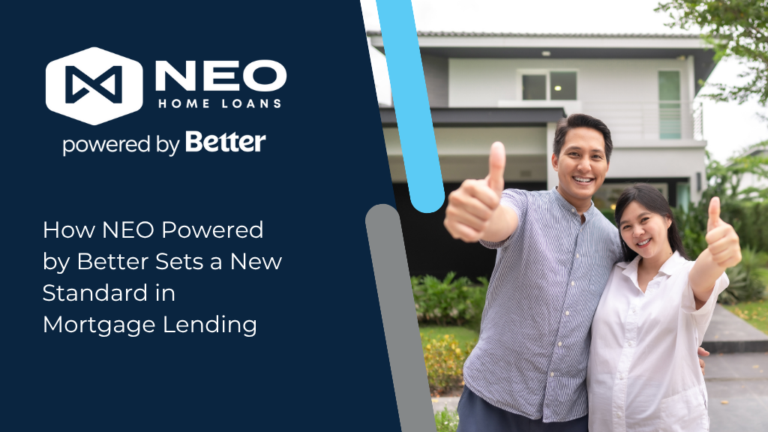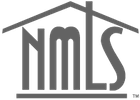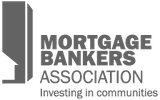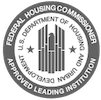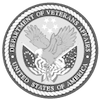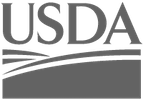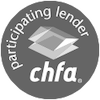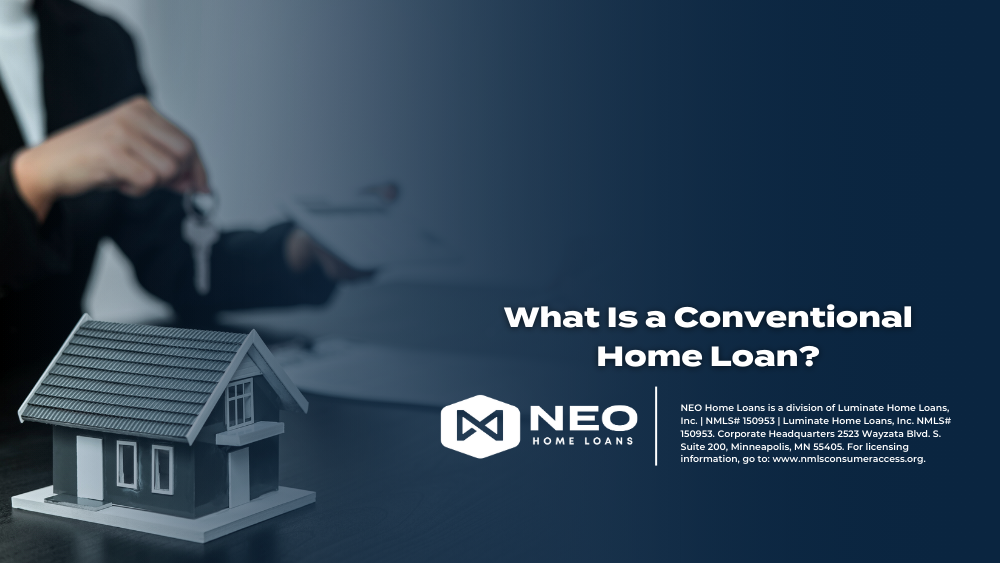
This article was originally posted on moneygeek.com with collaboration from Ryan Grant, Division President at NEO Home Loans.
Conventional home loans are private (not government-backed) mortgages. They are the most popular financing option for first-time buyers in the U.S. Term options can be flexible. And the rates and underwriting requirements can vary widely depending on the lender, property, size of the down payment, etc. As such, this traditional loan suits the needs of many homebuyers.
Most conventional home loans require borrowers with less than 20% down to purchase private mortgage insurance (PMI), which is an additional fee that protects the lender if a borrower defaults on the loan. Before signing on the dotted line, borrowers, especially those with low down payments, should compare the cost of a conventional home loan plus PMI to that of a government-backed mortgage.
What Is a Conventional Loan?
Conventional mortgages are residential loans that are not backed by the government. They comprise 82% of the mortgage market in the U.S., while government-insured VA, FHA and USDA home loans make up the remaining 18%.
Conventional loans in the United States evolved substantially following the Great Depression. Before then, most borrowers had to put 50% down and repay the balance in just five to ten years. Interest rates were variable. Financing challenges kept the U.S. homeownership rate under 50%.
To increase homeownership, the federal government created the Federal National Mortgage Association (FNMA) in 1938. The FNMA (aka Fannie Mae) improved mortgage terms and availability for borrowers by establishing a market for lenders to sell conventional home loans to investors.
Today, American conventional mortgage standards are the most generous in the world. Typical loans feature 30-year terms and have minimum credit score requirements of 620. And conventional loan down payments can be as low as 3%. Government-backed programs are also magnanimous: FHA loans allow credit scores as low as 500, and VA and USDA loans require no down payment at all.
Types of Conventional Loans
Conventional home loans can be grouped in many different ways, but the most common is conforming versus nonconforming.
Conforming Loans
Conforming mortgages get their name because they conform to guidelines established by government-created home financing corporations Fannie Mae and Freddie Mac. The loans are bundled together in large pools, and shares (similar to stock) are sold to investors. Fannie Mae’s and Freddie Mac’s guidelines are not identical, but they are similar.
Conforming loan guidelines include restrictions on loan size, debt-to-income ratios and credit scores. They also establish acceptable property standards.
Jumbo Loans
The term “nonconforming” covers conventional loans that deviate from conforming guidelines for any reason. Mortgages that don’t conform because they are too large are called jumbo mortgages. Jumbo home loans are generally harder to get and are often more expensive than conforming loans.
Other Nonconforming Loans
Other loans might be nonconforming because of the way the lender chooses to verify borrower income. Conforming mortgage guidelines require tax returns or pay stubs. But some nonconforming guidelines determine borrower income by averaging bank deposits over several years.
Nonconforming loans also cover atypical property types — such as a farm or condotel. And finally, nonconforming loans can include financing for borrowers with low credit scores. These loans are called non-prime.
Portfolio Loans
Lenders have more leeway to get creative with products and guidelines when they don’t sell their loans to outside investors. That’s because they aren’t passing the risk to others; they instead lose their own money if a mortgage doesn’t work out. These creative mortgages that lenders keep on their books are often called “portfolio loans.”
Nonconforming loans are harder to find, and comparing rates and terms can be a greater challenge for borrowers. But they are great options for those who don’t fit neatly into typical conventional financing options.
Advantages of Conventional Loans
Conventional loans offer a few advantages over their government-backed counterparts:
- FHA and USDA loans require upfront mortgage insurance premiums (MIP) plus monthly mortgage insurance payments. For most borrowers, MIP is more expensive than the PMI required for conventional loans exceeding 80% of the purchase price.
- The MIP for FHA and USDA loans apply for the life of the loan, while homebuyers with PMI can request cancellation once they pay their loan down to 80% of the purchase price.
- Government-backed loans can’t be used for vacation homes or rental properties, only owner-occupied property.
- Homebuyers who have defaulted on federal obligations like taxes, student loans or other government-guaranteed financing are often ineligible for government-backed home loans.
Anyone looking for a mortgage should compare conventional and government-backed loans to determine which offers the best terms at the lowest cost.
The main advantage of conventional loans for many is cost. The required insurance premiums for most government loans are the same regardless of the borrower’s credit score. That’s nice if you have a low credit score and a small down payment, but it’s expensive if you have an excellent credit score or a larger down payment.
For example, the MIP for a typical FHA 30-year mortgage (3.5% down) is 0.85% per year. In contrast, PMI for a conventional loan with 3% down is as low as 0.46% for borrowers with excellent credit. And borrowers who put down 5% still pay 0.85% with FHA, but their premium could be as low as 0.35% with a conventional loan.
MONEYGEEK EXPERT TIP
If you currently have a government-backed loan, refinancing to a conventional mortgage might save you a great deal if it allows you to cancel expensive MIP coverage. Even if your interest rate doesn’t drop, you might pay much less over the life of your loan. Add your MIP percentage to your mortgage rate when you use MoneyGeek’s Refinance Calculator to see your potential savings.
Disadvantages of Conventional Loans
Conventional home loans are usually cheaper than government-backed mortgages, but they are not always the best option. Conventional home loan underwriting guidelines require higher minimum credit scores and lower debt-to-income ratios than those of most government-backed mortgages.
Factors that can make FHA, VA or USDA loans a better choice include:
- Government-backed loans are assumable, which can make it easier to sell when interest rates are higher.
- Some condominium projects are approved for government loans but not conventional loans.
- Government-backed loans allow down payments to be 100% gifted.
Finally, anyone eligible for VA financing (service members and veterans, mainly) should compare VA home loans to conventional mortgages before committing to a program. The VA mortgage is a benefit earned by service members, and it often comes with a lower mortgage rate than conventional loans. There is no monthly mortgage insurance, even with no down payment. (The VA does add a one-time funding fee, which can be wrapped into the mortgage.)
Alternatives to Conventional Mortgages
Conventional loans are popular, but they aren’t the only option. There are mortgage programs designed for veterans, buyers with a lower credit score and homeowners in rural areas. Depending on your circumstances, these other types of mortgages may better fit your needs.
ALTERNATE TYPES OF LOANS
- FHA Loans. FHA mortgages are not just for first-timers or low-income borrowers. There are no special eligibility requirements as long as the borrower and property qualify for financing. Maximum loan amounts depend on local housing costs. Borrowers with credit scores exceeding 579 can finance with 3.5% down, while those with scores between 500 and 579 must put at least 10% down.
- VA Loans. VA home loans have no official maximum loan amount or minimum credit score. (However, individual lenders can set their own guidelines.) VA eligibility is mainly restricted to service members and honorably discharged veterans. VA home loans are earned benefits with many advantages.
- USDA Loans. USDA mortgages were created to finance rural properties. About half of Americans live in areas considered “rural” and eligible for the program. Low-income borrowers may qualify for direct loans from the government with subsidized interest rates and extended repayment terms. Moderate-income borrowers may be eligible for USDA-guaranteed loans. USDA mortgages require no down payment.
Conventional Loans by the Numbers
Conventional loans are the most popular mortgage options today, with about 82% market share. However, economic factors, government regulations and lender policies influence this number continually.
In 2005, for example, homebuyers chose conventional loans 80% of the time. But during the Great Recession, conventional lenders raised their lending standards and pricing, making it difficult for many to obtain financing. By the end of 2009, conventional loans financed just 54% of home purchases.
Conventional mortgages include conforming loans sold to Fannie Mae and Freddie Mac and nonconforming loans like jumbo mortgages. Jumbo mortgages are too large to meet conforming loan guidelines.
For 2021, the limit for conforming mortgages in most of the U.S. is $548,250 for single-family homes. It’s higher for multi-unit properties like duplexes and in designated high-cost areas. So a conforming loan in Alameda County, California, is a jumbo mortgage in Baton Rouge, Louisiana. Here are the ranges for conforming loans in the U.S.:
- 1-unit homes: $548,250–$822,375
- 2-unit homes: $702,000–$1,053,000
- 3-unit homes: $848,500–$1,272,750
- 4-unit homes: $1,054,500–$1,581,750
In 2019, jumbo mortgages comprised just under 7% of conventional home loans and just under 5% of all purchase mortgage originations. Market share for these products tends to increase when the economy is healthy and decrease when lending becomes more restrictive.
In 2020, the COVID-19 pandemic shook up the nonconforming mortgage market, and many lenders like Wells Fargo Bank suspended jumbo mortgage lending. Companies servicing conforming mortgages are protected from losses if their borrowers are in a COVID-19 (CARES Act) forbearance program, so lenders are still willing to make these loans.
Conventional Mortgage Loan FAQs
The minimum down payment for a conforming loan is 3%. Jumbo lenders require higher down payments — typically, 10% or more.
The minimum credit score for a conforming mortgage is 620. There are non-prime mortgages for borrowers with bad credit, even for credit scores as low as 500.
Most lenders care about debt-to-income ratios (DTI) instead of income. Borrowers can determine their DTI with a debt-to-income calculator. The maximum DTI for most conforming loans is 45%.
While there are loan size limits for conforming conventional loans, there are no limits on nonconforming jumbo loans.
To approve and fund a conventional loan, lenders want to know who you are, how much you owe, how much you earn and how much you own. Typical documents include:
- Government-issued ID
- Tax returns for most recent two years if self-employed, or recent pay stubs for wage-earners
- Copies of bank, investment and retirement account statements, all pages
These are the basics. Extras might include a divorce decree to prove receipt or payment of support, letters explaining derogatory items on a credit report or copies of leases for rental property.
Next Steps To Get Your Conventional Mortgage
Once you know that a conventional mortgage is right for you, you’ll want to run some numbers and get comfortable with mortgage payments, interest rates and affordability calculations. You can start looking at homes for sale once you have a price range in mind.
- Check Mortgage Rates. Mortgage lenders are private companies with their own set of products, pricing and policies. Check today’s mortgage rates to get a look at current offers. You have to know what current rates are to calculate prospective mortgage payments.
- Calculate Your Mortgage Payment. Your prospective monthly mortgage payment depends on the loan amount, interest rate and repayment term. Use a mortgage calculator to see how these variables affect your future mortgage payment.
- Determine What Mortgage Can You Afford. You can test-drive a mortgage payment with a debt-to-income calculator. Input your current debt payments and an estimated mortgage payment to see if your DTI is low enough to qualify for a home loan approval.
Expert Insight on Conventional Home Loans
Conventional loan market share (versus government-backed loans) has ranged from about 55% to approximately 80% in recent years. What do you believe drives changes in the popularity of these loans?
Market conditions are the main driver of the loan types we see. For example, when affordability becomes more challenging, the average buyer needs to put less money down and also needs a higher debt-to-income ratio to qualify. That, combined with the credit challenges that we’re seeing at the moment, will lead to more FHA (Federal Housing Administration) loans. In today’s market, the type of loan that a buyer will get should be dictated by three things.
- What is the best loan to help them get into the most appropriate home for their current situation?
- What loan program will give them the best possible chance of getting their offer accepted and actually getting into a home?
- What loan program will allow them to take advantage of the upcoming opportunities as interest rates trend down and housing prices climb?
The answer to all of these questions is very specific to each buyer, and your mortgage advisor should be able to help you navigate each question and answer them for you so you know the best strategy now and well into the future.
What do you believe is the most pervasive myth about conventional mortgage financing?
Many people believe that conventional financing is the best type of financing you can get, which is not always the case. For example, VA loans have better interest rates, typically require no down payment, and do not have mortgage insurance. That is the best financing option possible, but obviously, you have to be a veteran to qualify for that. Also, FHA loans are the best for clients with credit challenges and a low down payment. Conventional loans are just that, “conventional.” They follow a certain qualifying standard but are not always the best loan for every client.



